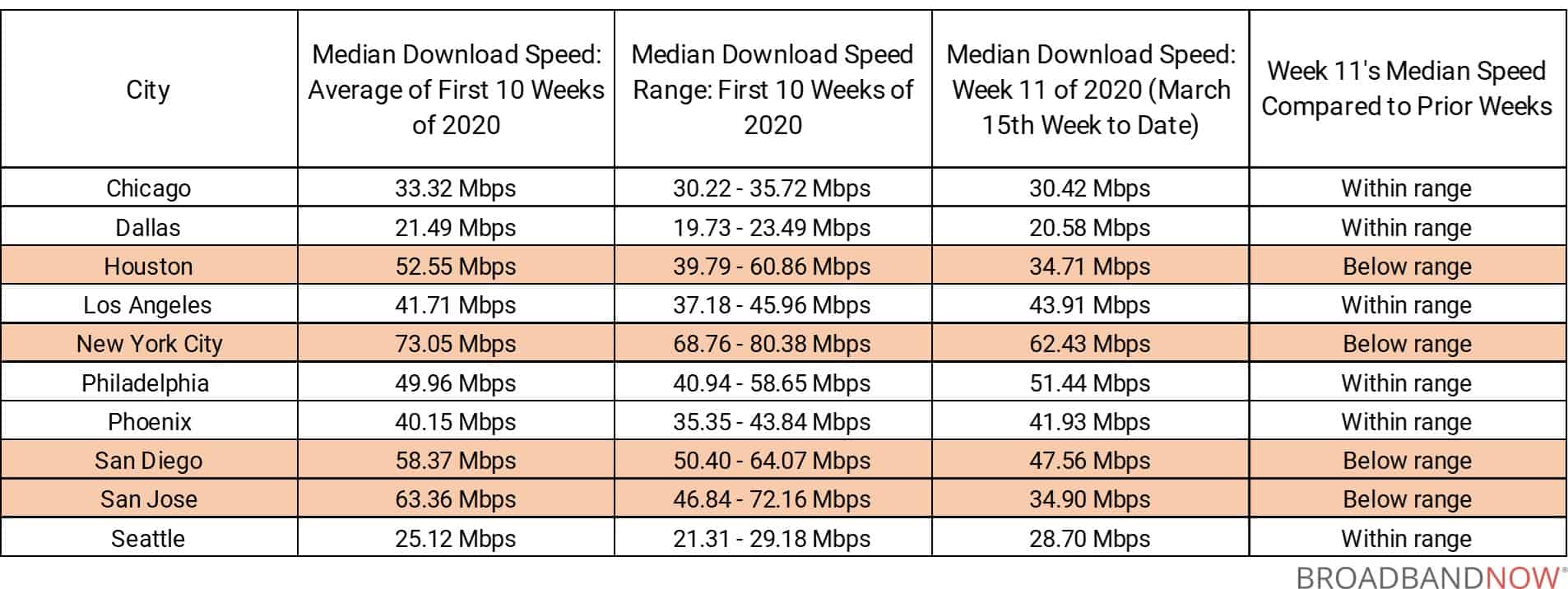Houston, San Diego, San Jose, and New York City have all seen degraded network performance over the past week
Across the nation, millions of Americans are adjusting to working from home as offices close and major cities adopt quarantine measures due to the ongoing coronavirus pandemic. In response, companies like AT&T and Comcast have suspended data caps and late fees for the foreseeable future.
As millions of users vacate dedicated business connections in favor of their home connection, providers are seeing a significant surge in virtually every state. Are these residential networks holding up? Or are they choking on the increased demand being placed on them? Here’s what the data tells us.
Key Findings
- Six of the top ten U.S. cities by population have seen little to no change in median speed test results from the past 11 weeks leading up to the week of March 9th.
- Four cities have seen degradations in speed, including Houston, New York City, San Diego, and San Jose.
- Seattle, now regarded as the epicenter for the current pandemic, has seen a median download speed increase as of March 9th.
Download Speed Trends Over Time
The table below shows MLabs download speeds comparing the week of March 9th to the previous 10 weeks for the top 10 U.S. cities by population. For six cities, including Chicago, Dallas, Los Angeles, Philadelphia, Phoenix, and Seattle, download speeds were within the range of the previous 10 weeks. In four others – Houston, New York City, San Diego, and San Jose, this past week’s download speeds were lower than the previous 10, potentially suggesting some strain on network infrastructure in these areas.

Are you a journalist or researcher writing about this topic?
Contact us and we'll connect you with a broadband market expert on our team who can provide insights and data to support your work.
Curious about internet access in the U.S.?
- See how all 50 states rank for internet access, pricing, and speeds. (New Jersey is the best, Alaska is the worst.)
- Check out in depth broadband statistics for every city in the county, including internet access in Dallas, Los Angeles, and Detroit.
- Find information on the top internet service providers in the U.S. such as AT&T, Charter Spectrum, and Xfinity.
All six of the cites listed below have stayed within the same relative range in download speeds over the past 11 weeks. In other words, even amidst unprecedented demand, consumer networks in these areas appear to be holding steady, even showing increased speeds overall in certain cities, like Seattle.


Looking ahead
We will continue to monitor network performance across major U.S. markets in an effort to better understand how our national infrastructure is adapting to this highly dynamic environment. If the situation changes in any major cities around the country, we will update this report with any relevant information.
Here are some other resources that you may find useful:
About the data
We analyzed raw speed test data from MLabs for the top 10 cities by population in the U.S. in order to determine how well ISP’s were coping with this unprecedented surge in demand. Data was taken from the past 11 calendar weeks, and we calculated median download speeds and ranges for every city listed based on this information.

